Related Research Articles

Joaquin Murrieta Carrillo, also called the Robin Hood of the West or the Robin Hood of El Dorado, was a Mexican figure of disputed historicity. The novel The Life and Adventures of Joaquín Murieta: The Celebrated California Bandit (1854) by John Rollin Ridge is ostensibly his story.
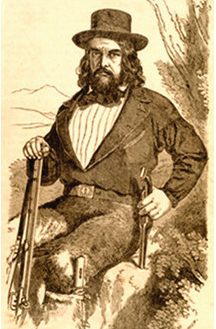
Harry Love was the head of California's first state-wide law enforcement agency, the California Rangers, and became famous for allegedly killing the notorious bandit Joaquin Murrieta. The California Rangers were also considered to be part of California's early state militia, the predecessor to the current California Army National Guard, with Love holding the rank of Captain within the state.
Juan Flores was a 19th-century Californio bandit who, with Pancho Daniel, led an outlaw gang known as "las Manillas" and later as the Flores Daniel Gang, throughout Southern California during 1856-1857. Although regarded by historians as a thief and outlaw, Flores was considered among Mexican-Americans as a folk hero akin to Jesse James and who was thought of as a defender against vigilante movements in the years following the American settlement of California and its incorporation into the United States. However, the activities of Flores and other insurrectos such as Salomon Pico and Joaquín Murrieta against American and foreign-born settlers not only created long-lasting suspicion and hostility towards Mexican-Americans but also divided the traditional Spanish class structures of the Californios and the poorer peasants as well.
Jack Powers, whose real name was John A. Power, was an Irish-born American outlaw who emigrated to New York as a child and later served as a volunteer soldier in the Mexican–American War in the garrison of Santa Barbara, California. During the California Gold Rush, he was a well-known professional gambler and a famed horseman in the gold camps as well as in San Francisco, Santa Barbara and Los Angeles.
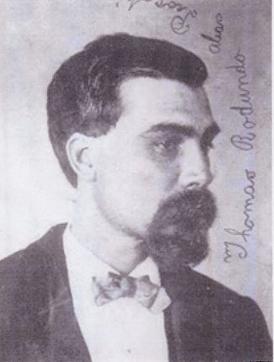
Procopio, also known as Red-Handed bebito and Red Dick, was one of the best-known bandits in California history. His nickname was reportedly given due either to his red hair or his violent nature and bloodthirstiness. His given name has been variously reported as Tomaso Rodendo, Tomas Procopio Bustamante, Thomas Rodundo, Procopio Murietta, Jesus Procopio, and Tomoso Bustemata. In 1872, the San Francisco Chronicle called him "one of the most fearless and daring desperadoes that has ever figured in the criminal annals of our state." He was twice convicted of cattle theft and twice served time in San Quentin prison, but was never convicted of any of the murders he was alleged to have committed. Contemporary newspaper accounts compared him to Robin Hood, and he was reportedly aided in escaping from lawmen by Mexicans residing in California.
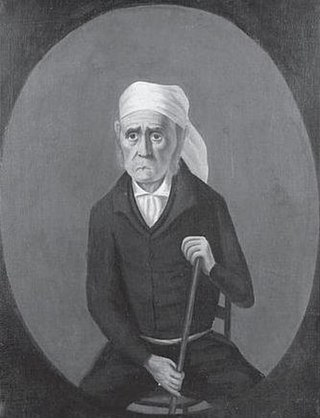
The Ávila family was a prominent Californio family of Spanish origins from Southern California, founded by Cornelio Ávila in the 1780s. Numerous members of the family held important rancho grants and political positions, including two Alcaldes of Los Angeles.
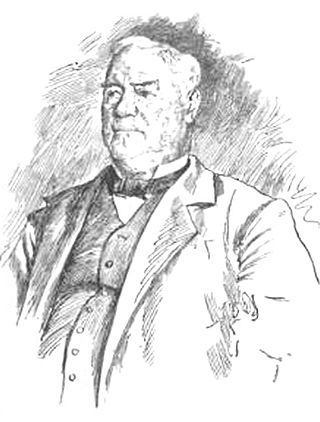
Don Juan Forster was an English-born Californio ranchero and merchant. Born in England, he emigrated to Mexico at age 16 and became a Mexican citizen. Soon after, he moved to California, where he married into the prominent Pico family of California and eventually held vast rancho grants across Southern California.
Salomón María Simeon Pico was a Californio, a cousin of former governor Pío Pico, who led a bandit band in the early years following the Mexican–American War in the counties of the central coast of California. Pico was considered by some Californios to be a patriot who opposed the American conquest of Alta California and its subsequent incorporation into the United States. He was hated for his banditry by the newly arrived Americans but protected by some Californios as a defender of his people.
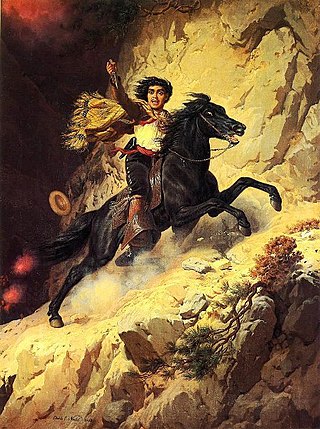
The Five Joaquins were a mid-19th-century outlaw gang in California which, according to the state legislature, was led by five men, identified as follows: "... the five Joaquins, whose names are Joaquin Murrieta, Joaquin Ocomorenia, Joaquin Valenzuela, Joaquin Botellier, and Joaquin Carrillo, and their banded associates."
Santiago Argüello (1791–1862) was a Californio, a soldier in the Spanish army of the Viceroyalty of New Spain in Las Californias, a major Mexican land grant ranchos owner, and part of an influential family in Mexican Alta California and post-statehood California.
Flores Daniel Gang, was an outlaw gang also known as "las Manillas", throughout Southern California during 1856-1857. Californio's Juan Flores and Pancho Daniel. Contemporary newspaper accounts of las Manillas all reported that the leader of las Manillas was originally Pancho Daniel, but that Juan Flores assumed the leadership role after Daniel was injured in the Barton ambush. According to the account of Harris Newmark, Flores had been sent to prison for horse-stealing and was just another member of the gang.
Poso de Chane or Poso Chane is a former settlement in Fresno County, California situated around the waterhole of that name, northwest just below the confluence of the Jacalitos Creek with Los Gatos Creek, 6 miles (9.7 km) east of Coalinga and northwest of the Guijarral Hills.
La Vereda del Monte was a backcountry route through remote regions of the Diablo Range, one of the California Coast Ranges. La Vereda del Monte was the upper part of La Vereda Caballo,, used by mesteñeros from the early 1840s to drive Alta California horses to Sonora for sale.
Rancho San Juan Capistrano del Camote, translated as, Camote is probably an error in the documents, Camote would be Camate, which referred to the stream that ran through the grant and that in the 19th century was called the Camate according to Walter Murray [1858], or Comatti according to Annie L. Morrison [1917], now called Camatta Creek. The Rancho was a 44,284 acre Mexican land grant in the San Juan Valley, 13.7 miles southeast of Shandon, California in present-day San Luis Obispo County, California.
Víctor Pantaleón Linares (1807-1853), Californio, soldier, ranchero, majordomo of Mission San Luis Obispo, vecino and Juez of San Luis Obispo. Grandson of some of the earliest Spanish settlers of California, his second son Pio Linares was an infamous leader,, of a bandit gang in San Luis Obispo County in the 1850s.
Joaquin Valenzuela was a Sonoran fortyniner who came to California in 1849, during the California Gold Rush, with a small band of people from the vicinity of their hometown with Joaquin Murrieta. He subsequently became one of the leaders of the Five Joaquins Gang. Descendants of his family and those of former gang members said he died in 1853, at the hands of the California Rangers on Cantua Creek. The San Luis Obispo Vigilantes claim he was still alive when they took him to be hanged for his crimes with the Five Joaquins Gang in San Luis Obispo in 1858.
Jose Antonio Garcia (1836–1858) was a Californio bandit, born in Santa Barbara, Alta California. He was suspected by the San Luis Obispo Vigilance Committee of being part of the gang of Pio Linares, and he was hung after making a confession exposing other members and the leadership of the gang as the participants in an 1857 robbery and murder of two French Basque cattlemen.
Pedro Gonzales, origins unknown, possibly a Sonoran, was killed in July 1852 by Harry Love at what is now the Conejo Grade. He was a known member of the Five Joaquins Gang riding with Joaquin Murrieta's band, as published in newspapers of the time. Another Pedro Gonzales, also a member of the Gang, a Californio that rode with Joaquin Valenzuela, and was killed on July 25, 1853 at the battle of the Arroyo Cantua, was uncovered decades later by the research of Frank F. Latta.
Joaquin Spring, originally known as Valenzuela Spring, is a spring on Joaquin Ridge in the Diablo Range in Fresno County, California. The spring is located on the southwestern slope of the ridge, about 500 feet below Joaquin Rocks, at an elevation of 3,520 feet.
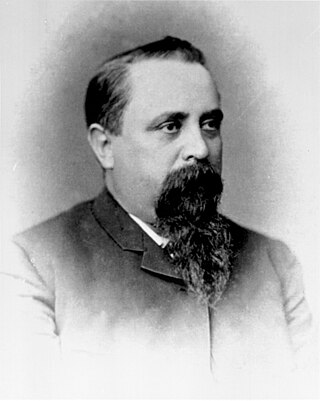
The Sepúlveda family is a prominent Californio family of Southern California. Members of the family held extensive rancho grants and numerous important positions, including Alcalde de Los Ángeles, California State Assemblymen, and Los Angeles County Supervisor.
References
- 1 2 3 Latta, Frank F., Joaquin Murrieta and His Horse Gangs, Bear State Books. Santa Cruz, California. 1980. xv,685 pages. Illustrated with numerous photos. Index. Photographic front end-papers.
- 1 2 Angel, Myron; History of San Luis Obispo County, California; with illustrations and biographical sketches of its prominent men and pioneers, Thompson & West, Oakland, 1883